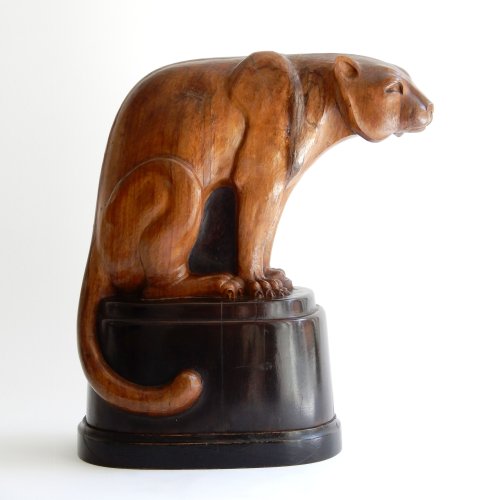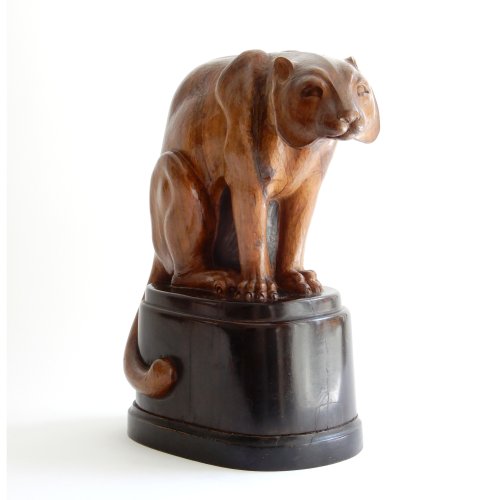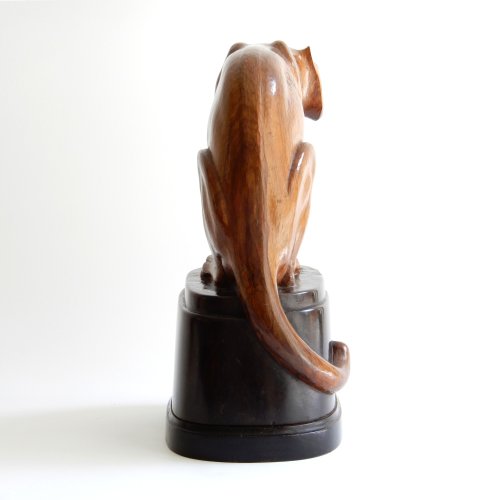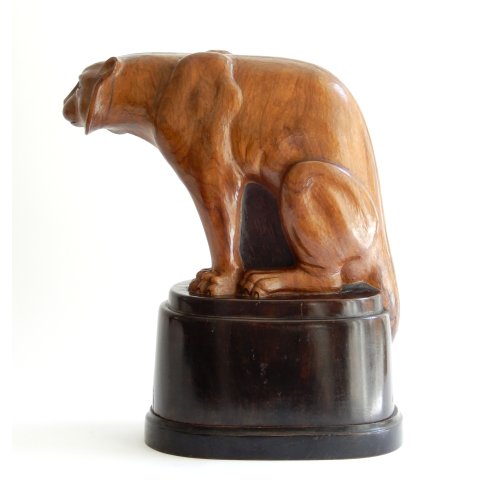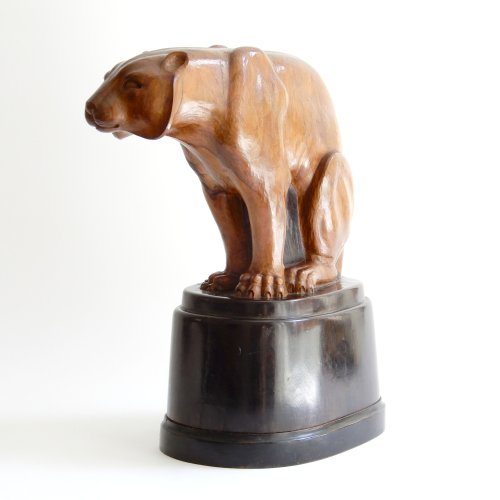Fritz Behn (Attr.) (1878-1970) Art Deco Panther
About this piece
Wooden Panther, from the 1920s-1930s, the Art Deco Period
This panther is carved directly from wood. I call it a panther, but it could also be a leopard or a puma; it’s hard to tell. The artist, Fritz Behn, intended to carve it from a single piece of wood, including the base. Sometimes, he just fell short and had to add a small piece, which is still visible in this case.
The panther is magnificent in its appearance. It truly stands in all its glory.
Fritz Behn made several trips to East Africa, where he studied wild animals. These journeys brought him international recognition. His animal sculptures were highly appreciated, and he received numerous commissions for large public works.
Unfortunately, this panther is not signed. Nevertheless, it is attributed to the German sculptor Fritz Behn (1878–1970), who portrayed many animals, most of which were cast in bronze. His subjects often included predators, particularly big cats like this panther. The way the panther sits on its base—at rest yet still alert—is characteristic of Behn’s work. The very detailed depiction of the claws is remarkable, while the rest of the body, such as the head, is lightly stylized in a way that aligns perfectly with his other works from the Art Deco period.
The wood has acquired a beautiful patina over time. The wooden base is carved as part of the design and has been ebonized, creating a stunning effect.
Secession. He worked diligently, and in 1904, he held his first solo exhibition at the Royal Exhibition Building on Königsplatz in Munich.
In 1905, 1907, and 1909, he participated in the Venice Biennale. During the years 1907–08 and 1909–10, he also traveled to the German colonies in East Africa. He enjoyed his time there, often embarking on safaris and creating many animal portraits in plaster—elephants, predators, monkeys, and more. Upon his return, he refined these works and had them cast in bronze.
Behn gained international recognition. An American magazine compared him to the French artist Antoine-Louis Barye. He also embarked on study trips, including to Paris, where he visited Rodin in 1912. He spent time in London and Italy as well, and his career thrived.
He received many commissions but also created a significant amount of independent work.
When World War I broke out, Behn was mobilized, but he developed lung problems. By mid-1916, his military service ended, and he returned to his art. He was strongly nationalistic, a trait he would unfortunately retain throughout his life.
During the 1920s, Behn spent several years in Brazil, partly for health reasons. He prospered financially there and eventually returned to Munich. He became a member of the NSDAP (Nazi Party) and created portrait busts of several prominent figures. During the war years, he served as the director of the academy. After the war, he was dismissed due to his party membership.
Despite this, Behn continued to work as a sculptor until his death in 1970.
Literatuur:
- KLaus W. Jonas; “Der Bildhauer Fritz Behn”, Lübeck 2000
Condition
We asked a very experienced restorer to fill in the small cracks and touch up the pedestal in the worn, noticeable spots without compromising its appearance. After all, it's quite an old piece by now. The result is definitely impressive.
Material:
Wood
Measurements:
Height: 30 cm
(11,81")
Period:
1920-1930
Origin:
Germany
Artist / atelier:
Fritz Behn (Attr.),
